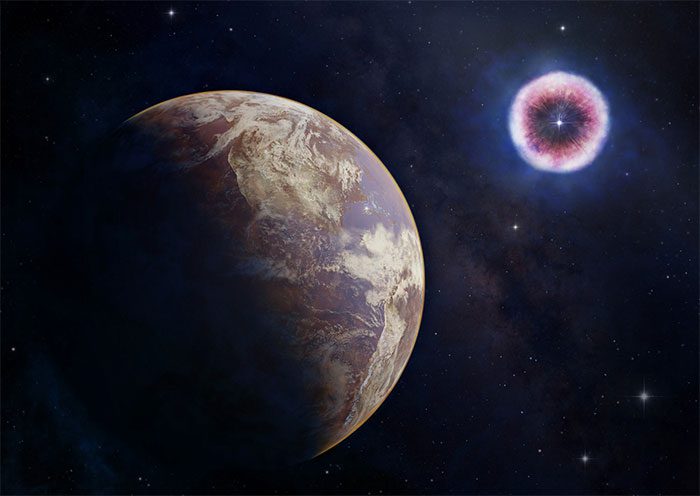Many planets located 160 light-years away are not as fortunate as Earth, as they are being stripped of their life-supporting layers by similar objects.
A team of scientists led by astronomer Ian Bruton from the University of Illinois at Urbana-Champaign (USA) has discovered another dangerous impact that supernovae can have on Earth-like planets.
A supernova is a stellar explosion that occurs when a star dies, releasing countless fierce cosmic rays into the surrounding environment. These terrifying energy particles can affect nearby planets for hundreds to thousands of years.

Supernovae can attack Earth-like planets – (Graphic image from NASA).
Located 160 light-years away from us, unfortunate Earth-like planets are having their atmospheres damaged by powerful supernovae surrounding them, which may strip away their habitability or, worse, destroy the life that exists on them.
This finding comes from observations based on 31 supernovae collected by NASA’s Swift and NuSTAR missions, as well as the XMM-Newton X-ray Observatory from ESA (European Space Agency).
This new survey indicates that not only do supernovae affect living organisms with radiation, but they also severely change the chemical properties in the atmosphere of those planets.
If Earth were to suffer a nearby explosion, this process could wipe out a significant portion of the ozone layer, which protects life from other cosmic radiation that could damage their DNA.
The impact is substantial enough to cause a mass extinction event.
This raises further suspicion regarding previous findings that suggest ancient mass extinction events on Earth are linked to the timing of certain supernova explosions, with the simultaneous death of various species associated with isotopes indicating extraterrestrial impacts found in tree rings.
Most recently, there is compelling evidence that a supernova occurred 2-8 million years ago, situated 65-500 million light-years away from Earth, still quite distant but showing signs related to small mass extinction events.
The evidence comes from a hot gas bubble known as the Local Bubble in which we are currently nestled, characterized by low density and still expanding, surrounded by a shell of cold gas with a diameter of about 1,000 light-years.
Fortunately, unlike the unfortunate planets far away, there are currently no supernovae threatening to explode near us, so at least we can feel safe in the near future.
This research has just been published in the scientific journal Astrophysical Journal.





















































